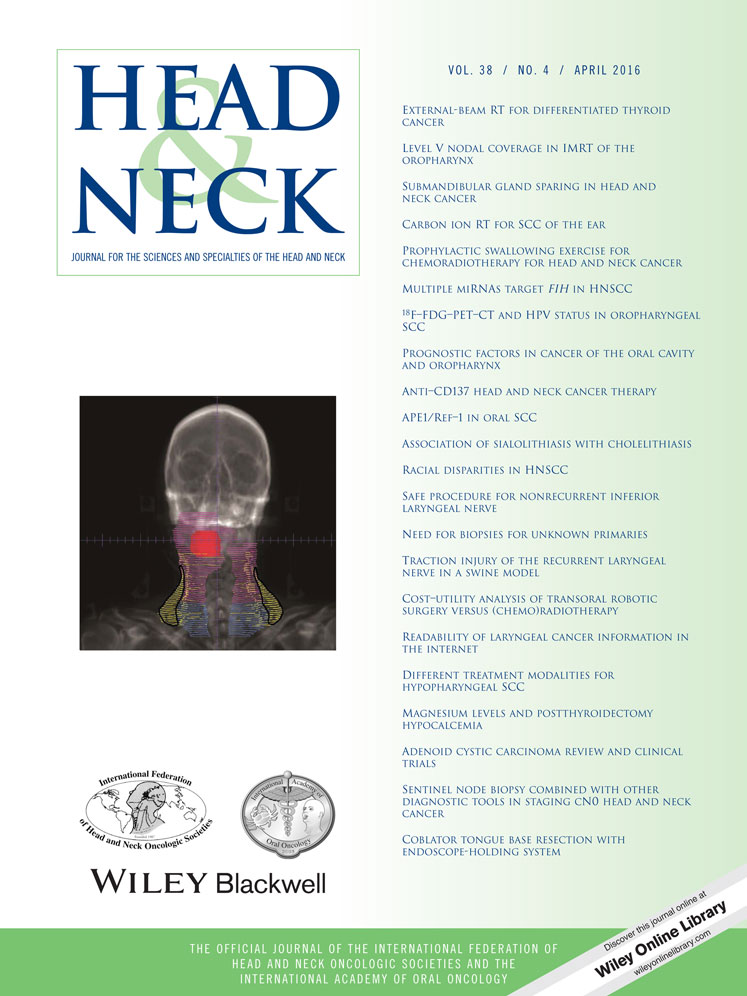Traction injury of the recurrent laryngeal nerve: Results of continuous intraoperative neuromonitoring in a swine model
Abstract
Background
Recurrent laryngeal nerve (RLN) palsy is the most serious complication after thyroidectomy. However, little is known about the degree of traction injury that causes loss of signal. The purpose of this study was to evaluate traction injuries in the swine RLN using continuous intraoperative neuromonitoring (IONM) and determine the traction power that results in loss of signal.
Methods
Thirteen swine underwent traction injury to the RLNs with continuous IONM, and stress-strain curves were determined for 8 nerves using the universal material testing machine in an ex vivo model.
Results
Traction injury at a mean power of 2.83 MPa caused loss of signal. The mean physiologic limit strain and tensile strength of the swine RLNs were found to be 15.0% and 4.9 MPa, respectively. Histological analysis showed no abnormal structural findings.
Conclusion
Traction injury of swine RLNs causes loss of signal at a power of 2.83 MPa. However, all injured nerves recovered within 7 days with no observed structural damage. © 2015 Wiley Periodicals, Inc. Head Neck 38: 582–588, 2016




